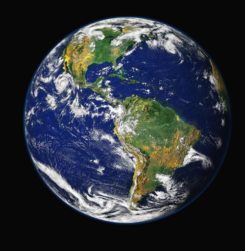Waste not, want not
URINE, THOUGH disdained by modern society, was once surprisingly useful stuff. Street-facing laundries in ancient Rome had pissoirs attached to them, to encourage passers-by in need of relief to provide, free of charge, a raw material which was then fermented into a degreasing agent. Urine also found employment as a mordant, to assist in the dying of cloth—Scottish tweed was once notorious for smelling of the stuff when it got wet. And urine was, too, a source of potassium nitrate, one of the ingredients of gunpowder.
Now, Chen Wei-Shan of Wageningen University, in the Netherlands, thinks he has found yet another use for urine—and one relevant to today’s needs rather than yesterday’s. He plans to employ it to create heat without fire from waste wood.
Burning wood is a good source of heat and it can be seen as sound from the point of view of greenhouse gases. That is because the carbon dioxide released into the atmosphere came thence in the first place, and would return there anyway if the wood in question were simply allowed to rot. But wood fires also bring environmental disbenefits, for they give off sulphur dioxide, carbon monoxide and other noxious gases along with that CO2.
Researchers have therefore been looking for ways to release wood’s latent heat by composting rather than combustion. Unfortunately, unlike other stuff that is routinely composted (dung and waste food, for example) wood does not, by itself, contain a wide enough range of nutrients to sustain the relevant micro-organisms. To digest it, these bugs need dietary supplements. And those—things like ammonium chloride—are too expensive for everyday use.
But urine is cheap—or would be, if routine ways of collecting it existed. And it contains large quantities of nitrogen and potassium (as its use in gunpowder demonstrates) and also of phosphorus (an element that was, as it happens, discovered by an alchemist trying to extract gold from urine). These are all nutrients which composting bugs need to thrive. So, as he writes in acs Sustainable Chemistry & Engineering, Dr Chen decided to give it a go.
To this end, he and his colleagues added urine to kiln-dried ash wood and composted the result in glass bottles. Some of this urine was actually a synthetic version, so that its composition was known precisely. The rest was donated by a 28-year-old man who had been medication-free during the previous two years. Both the artificial and the natural urine were diluted, to various degrees, during the process of testing.
The team found that oxygen consumption, wood consumption and heat production all rose rapidly in the jars during the experiment’s first week. Once things had settled, though, it was clear natural urine had something going for it which synthetic urine did not. The best synthetic-urine dilution (one part in five parts of water) resulted in a 13% loss of mass of wood after 40 days. The best natural urine dilution (one part in 8.5) brought about a 20% loss.
Why natural urine is more effective than the artificial stuff at the task Dr Chen set it remains unclear. He speculates that it is because natural urine is slightly more acidic, and that this matters to some of the relevant bugs. Which ones in particular, however, he has yet to work out.
Previous experiments suggest that compost-heaps of wood fed suitable nutrients can sustain internal temperatures of 40-55°C for long periods. That is high enough to be useful for heating buildings and, with a bit of a boost, perhaps for providing hot water as well. To commercialise the idea would mean designing a suitable reactor and heat exchanger, but the waste-wood fuel would be cheap. How you would go about gathering the necessary urine in bulk, given the expense of installing a network of suitably dedicated collection points, is not clear. But governments contemplating doing so might be heartened by the fact that, in Rome, the Emperor Vespasian slapped a lucrative tax on the city’s urinals—something once commemorated in France by the slang name for an old-fashioned pissoir: “une vespasienne”.
By The Economist






Hey in which did you obtain this wp layout from? Is it custom made? If so mind sharing your designers get in touch with info?
I have been surfing online more than three hours today, yet I never found any interesting article like yours. Its pretty worth enough for me. In my opinion, if all webmasters and bloggers made good content as you did, the internet will be much more useful than ever before.